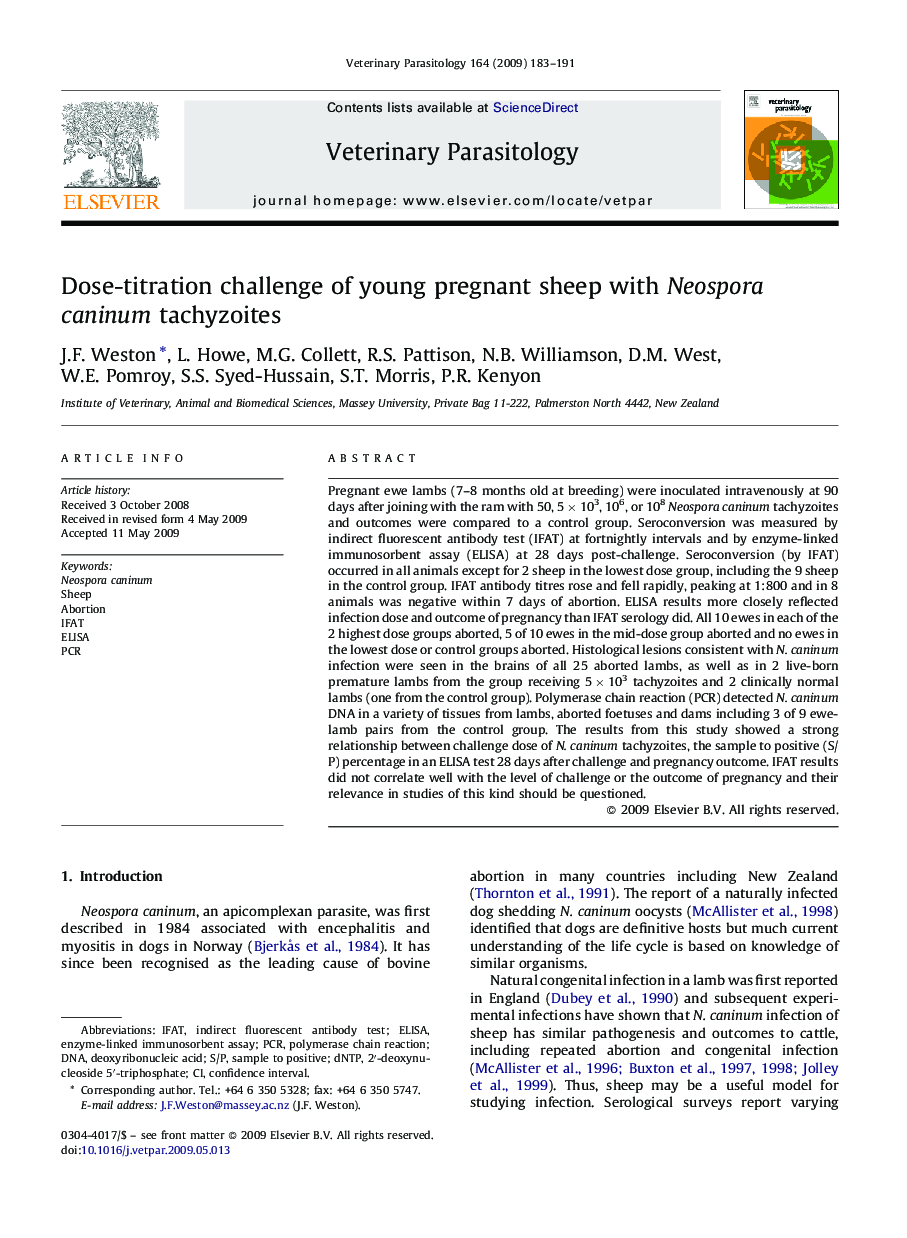| Article ID | Journal | Published Year | Pages | File Type |
|---|---|---|---|---|
| 2470938 | Veterinary Parasitology | 2009 | 9 Pages |
Pregnant ewe lambs (7–8 months old at breeding) were inoculated intravenously at 90 days after joining with the ram with 50, 5 × 103, 106, or 108Neospora caninum tachyzoites and outcomes were compared to a control group. Seroconversion was measured by indirect fluorescent antibody test (IFAT) at fortnightly intervals and by enzyme-linked immunosorbent assay (ELISA) at 28 days post-challenge. Seroconversion (by IFAT) occurred in all animals except for 2 sheep in the lowest dose group, including the 9 sheep in the control group. IFAT antibody titres rose and fell rapidly, peaking at 1:800 and in 8 animals was negative within 7 days of abortion. ELISA results more closely reflected infection dose and outcome of pregnancy than IFAT serology did. All 10 ewes in each of the 2 highest dose groups aborted, 5 of 10 ewes in the mid-dose group aborted and no ewes in the lowest dose or control groups aborted. Histological lesions consistent with N. caninum infection were seen in the brains of all 25 aborted lambs, as well as in 2 live-born premature lambs from the group receiving 5 × 103 tachyzoites and 2 clinically normal lambs (one from the control group). Polymerase chain reaction (PCR) detected N. caninum DNA in a variety of tissues from lambs, aborted foetuses and dams including 3 of 9 ewe-lamb pairs from the control group. The results from this study showed a strong relationship between challenge dose of N. caninum tachyzoites, the sample to positive (S/P) percentage in an ELISA test 28 days after challenge and pregnancy outcome. IFAT results did not correlate well with the level of challenge or the outcome of pregnancy and their relevance in studies of this kind should be questioned.
